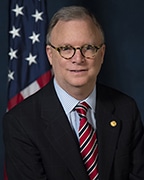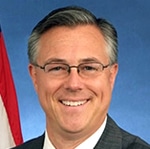Robert Sumwalt, chairman of the National Transportation Safety Board (NTSB), reported some preliminary findings Monday afternoon of his agency’s investigation into the Amtrak-CSX train collision that occurred Feb. 4 near Cayce, S.C.
The train had 139 passengers and eight crewmembers on board. The engineer and conductor in the cab of the locomotive were killed and six passengers remain hospitalized, two in critical condition. SMART TD conductor Michael Cella of Local 30 in Florida was one of two Amtrak crewmembers killed in the accident.
Based upon the event data recorders located within the Amtrak locomotive, Sumwalt said, Amtrak Train 91 was not speeding at the time of the collision.
He said Amtrak’s data recorder had the following information:
- The train horn was sounded for three seconds at the seven second mark before the collision.
- The train was traveling at a maximum speed of 57 mph in a 59-mph zone.
- The engineer moved the throttle to idle and had applied the emergency brakes before the collision.
- At the time of the collision, the train had reduced its speed to 50 mph.
Sumwalt stated that the reason for the 59-mph speed limit in the area was attributable to track signals being inoperable due to CSX performing upgrades to their track signal system to switch over to positive train control (PTC). He said a track warrant system was in place, and Amtrak had been given clearance to operate in the area.
As previously reported by Sumwalt, a switch had been thrown to allow a CSX train to back into a side track. The switch had never been released back to its original position, and the Amtrak train entered the track where the CSX freight train was parked instead of continuing on the main track.
Sumwalt said that the CSX dispatcher had been notified that the siding operation had been completed and so gave Amtrak clearance to proceed through.
Typically, when the dispatcher is given notification that such a proceeding has been completed, it means that the switch has been moved back into position. The NTSB is investigating as to why the switch had been locked into position for the siding.
Sumwalt reported that interviews with CSX’s engineer, conductor, trainmaster and dispatcher had been conducted Monday along with some of Amtrak’s crew.
Additional interviews are planned for Tuesday. No information about the content of the interviews was released.
The information provided in Monday’s press conference is considered preliminary, and no conclusions should or can be drawn until the NTSB’s investigation is complete and official causes are released by the agency.

